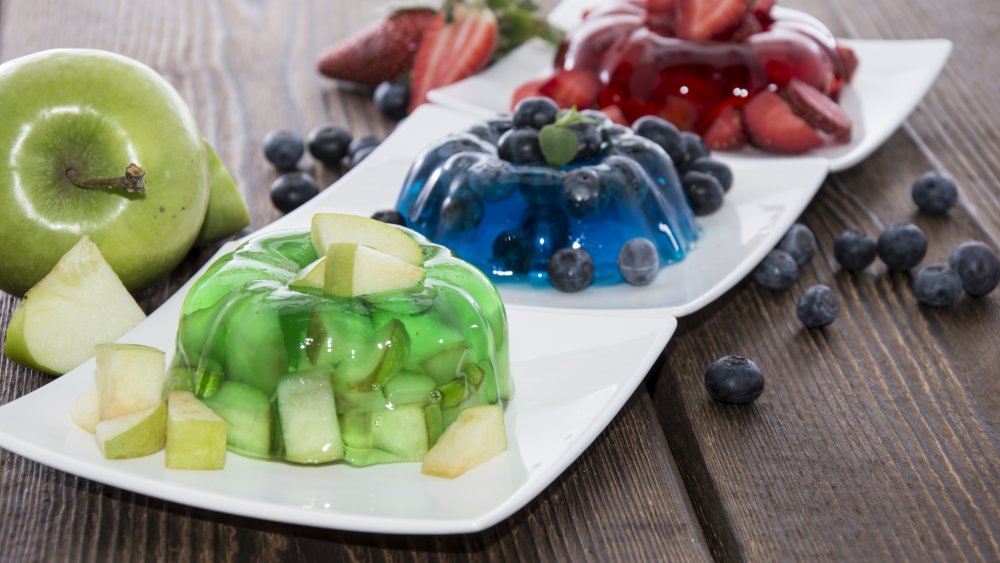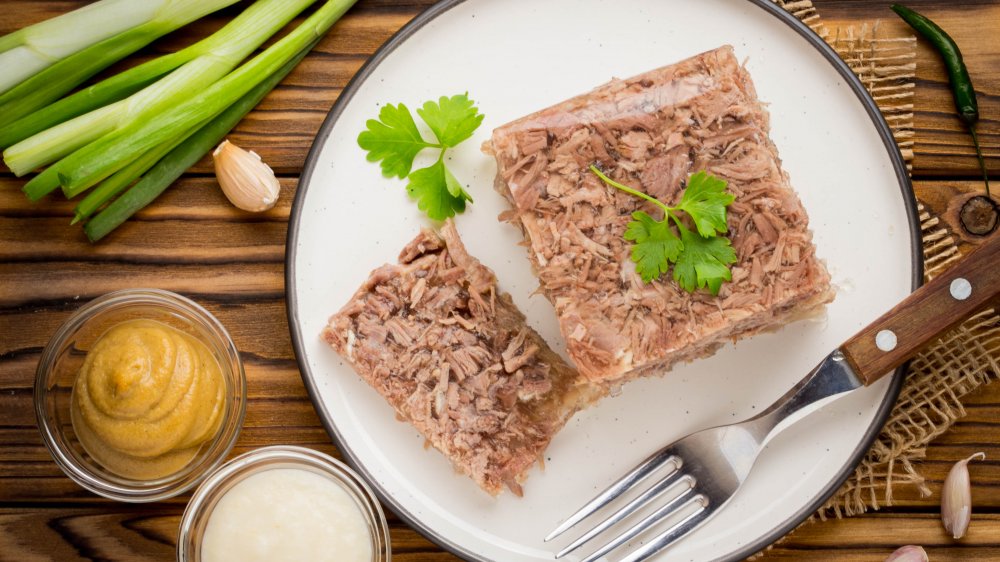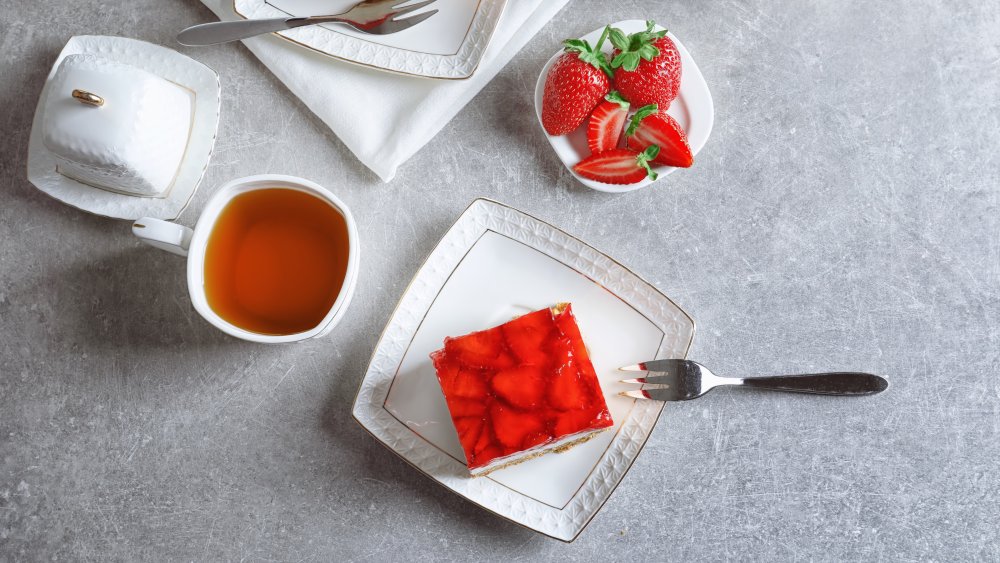The Untold Truth Of Jell-O Salad
When a recipe is boldly entitled "Perfection Salad," you'd better expect something good — some fresh tomatoes, a splash of high-quality olive oil. Smoked salmon? Some burrata, maybe? We're not picky.
But the 1904 recipe which bears that title doesn't hold the perfection you'd expect. The once-iconic "Perfection Salad" contains cabbage, celery, and chopped pimento olives. The delivery method, though, is where this salad shines. The sad collection of veggies is mercilessly trapped within a lemony, jiggly gelatin mold. According to Dainty Desserts for Dainty People, a 1915 recipe book, the Jell-O salad is especially lovely when paired with cold chicken or veal. Yeah, right.
This not-so-perfect recipe wasn't a fluke, nor was it the end of the rather powerful Jell-O salad era. Gelatins and aspics have been consumed for centuries, and the 20th century saw a particularly bizarre burst in jelly-centric dishes — both savory and sweet. But like any dish, the Jell-O salad was not created without reason. Jell-O salads were both a sign of prosperity and a diversion from the mundane, everyday menu, according to The New York Times. And some recipes, believe it or not, have survived the test of time.
Anything goes
As American cuisine progressed, Jell-O artisans weren't afraid to get weird with it. Orange or lime Jell-O was not only spiked with pineapple and strawberry, but also with any vegetable imaginable. Carrots, cucumbers, grated onion, and mushrooms made appearances in Dainty Desserts. These Jell-O salads were often topped with questionable garnishes: Whipped cream was spooned onto mushroom jelly, and mayonnaise dressing was drizzled over gelatinized apple slices.
And don't worry — the salads weren't strictly vegetarian. Ambitious cooks mixed in cream cheese, tuna, cute little prawns, and chicken. Let's not forget the genre of jellyfied seafood mousse, which, according to Buzzfeed, did not deliver. In an attempt to understand the Jell-O appeal, the staff at the National Museum of American History delved into some 1930s recipes, including a gelatin mayonnaise salad studded with American cheese. As much as the adventurous staff members probably love history, they apparently do not love the Jell-O-infused parts of it.
A sign of the times
So if Jell-O salads got so out of hand, with mystery meats and gloopy cottage cheese, why were they so popular to begin with? While it may be fun to gag at these wonky recipes — and trust us, it's fun — the Jell-O salad reflects America's long and convoluted history.
In the 1790s, James Hemings, a chef and slave of Thomas Jefferson, crafted a French-inspired wine jelly in Virginia. And in the decades that followed, Americans used gelatin recipes, when possible, to distract from starchy, mundane diets, according to food journalist Toni Tipton-Martin (via The New York Times).
In 1897, the name "Jell-O" was patented. By the 20th century, the treat – if you can call it that – was everywhere. Mixing vegetables and fruits into Jell-O allowed some cooks to preserve ingredients longer during the Great Depression, and the product's popularity continued after World War II, according to Serious Eats. As the 1950s exuded certain cultural norms — like that of the dutiful housewife — Jell-O salad became a way for women to entertain guests and showcase a family's social status. It symbolized modernity and boasted the fact that your family had a refrigerator, according to Huffington Post.
While the trend has largely fallen out of style, there are remnants. Many cooks still turn out Jell-O salads during Thanksgiving, according to The New York Times. And the Southern-born strawberry pretzel salad combines gelatinous, sweet, and savory ingredients for something that honestly sounds pretty tasty (via Southern Kitchen).


